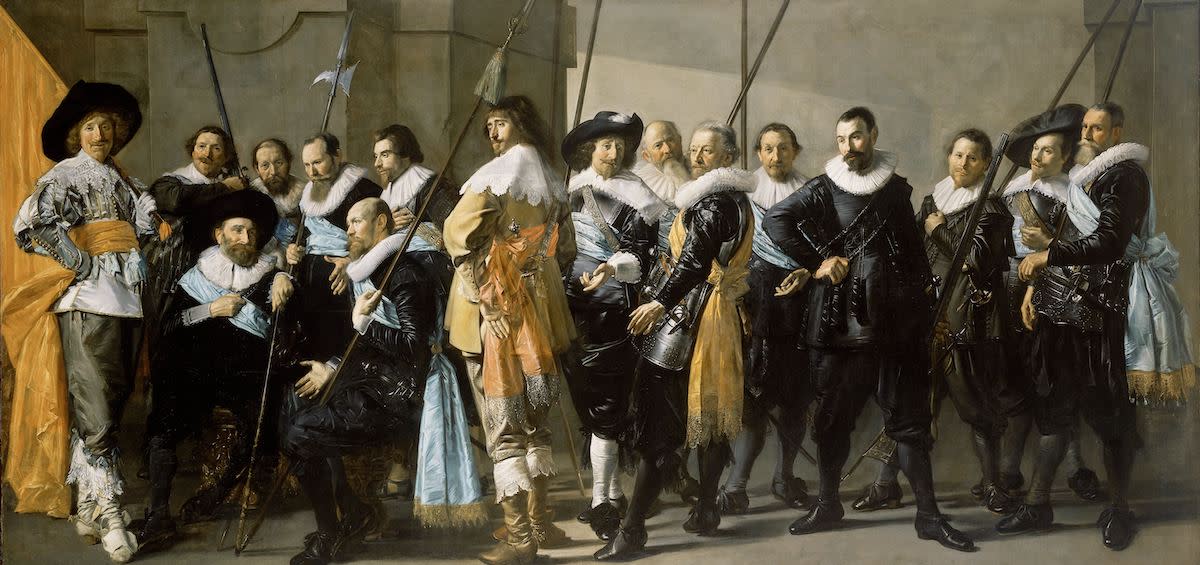Frans Hals: A Guide to Frans Hals’ Life and Paintings
Written by MasterClass
Last updated: Dec 7, 2021 • 3 min read
Frans Hals was a seventeenth-century Dutch painter who used loose brush strokes to create evocative portraits. Learn about Frans Hals’ life and notable works.
Learn From the Best
Who Was Frans Hals?
Frans Hals was a seventeenth-century Dutch painter who rose to prominence during the Baroque period. Along with fellow contemporaries like Rembrandt, Frans Hals was an important figure in the Dutch Golden Age. Frans Hals was primarily known for his stylistic advances in portraiture and unique brushwork.
A Brief Biography of Frans Hals
Frans Hals succeeded as a young man and struggled in his later years, but his artworks would transcend his lifetime and influence generations of artists.
- Youth: Although the exact date is unknown, Frans Hals was born sometime between 1582 and 1583. His parents, Franchois Fransz Hals van Mechelen and Adriaentje van Geertenryck, emigrated from the Spanish Netherlands with their children after the fall of Antwerp during the Eighty Years’ War. Frans Hals and his family landed in the city of Haarlem within northern Holland, where he spent the majority of his life. After his first wife died, Frans Hals married Lysbeth Reyniers in 1617. They remained married until his death decades later.
- Early works: During the early 1600s, Frans Hals studied under the Flemish mannerist painter Karel van Mander. He also studied the works of Flemish artists like Peter Paul Rubens and Anthony van Dyck. In 1610, Frans Hals joined the Guild of Saint Luke and gained commissions from prominent members of Haarlem’s growing middle class. Frans Hals painted portraits for civic guards and wealthy merchants like Pieter van den Broecke.
- Later works: In his later years, Frans Hals struggled with financial difficulties. His works lost some of their appeal with the larger public, and he began painting darker portraits featuring somber subjects. In the mid-1600s, Frans Hals sold his belongings to pay off debts. Although he eventually received a pension for his artistic contributions, Frans Hals died in 1666 without wealth or fame.
- Legacy: Inspired by his work, members of Frans Hals’ family began painting, including his son, Nicolaes Hals, and his younger brother, Dirck Hals. Throughout the seventeenth century, biographers like Theodorus Schrevelius and Arnold Houbraken wrote about Frans Hals’ life and artworks. During his lifetime, Frans Hals inspired several Dutch painters like Judith Leyster, Jan Miense Molenaer, Adriaen Brouwer, and Adriaen van Ostade. During the nineteenth century, Frans Hals’ work influenced French realist painter Gustave Courbet and impressionists like Édouard Manet and Vincent van Gogh. In 1862, the Frans Hals Museum was established in Haarlem. Frans Hals’ artworks are featured throughout the world in places like the Louvre Museum in Paris, the Royal Academy of Arts in London, and the Metropolitan Museum of Art in New York City.
3 Characteristics of Frans Hals’ Work
Frans Hals used bright colors and loose brush strokes to capture the energy of specific moments.
- 1. Loose brush strokes: Frans Hals used quick, noticeable brushwork to portray the facial expressions of the subjects of his portraits. His spontaneous painting style was distinct from the traditional Dutch art of the time.
- 2. High-contrast colors: Frans Hals used bright paints to depict skin tones and clothing in contrast to his typically darker backgrounds. Although he used darker palettes in his later works, Hals’ popular early portraits included vivid colors.
- 3. Realism: Frans Hals was one of the most influential portraitists of his era. Although he used a unique brushwork style, his portraits captured real subjects with authentic and often unassuming facial expressions.
3 Notable Works by Frans Hals
Explore some of the notable artworks by Frans Hals.
- 1. The Banquet of the Officers of the St George Militia Company in 1616 (1616): One of Frans Hals’ iconic group portraits, this painting features a collection of successful businessmen from Haarlem’s growing merchant class. Within the artwork, Hals creates an energetic scene with numerous characters playing off each other.
- 2. The Laughing Cavalier (1624): Although the identity of this portrait’s sitter is unknown, The Laughing Cavalier has become one of Hals’ most well-known paintings. It features a mustached young man wearing an amorous grin.
- 3. The Regents of the Old Men's Almshouse (1664): This painting exemplifies the darker style of Frans Hals’ later work. In this group portrait, a collection of somber gentlemen in black outfits pose in a shadowy room.
Ready to Tap Into Your Artistic Abilities?
Grab the MasterClass Annual Membership and plumb the depths of your creativity with the help of modern artist Jeff Koons, abstract artist Futura, and stage designer Es Devlin. Our exclusive video lessons will teach you to do things like utilize color and scale, explore the beauty in everyday objects, and so much more.
